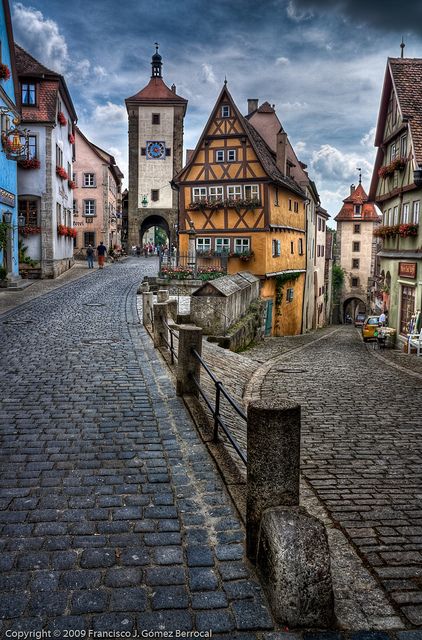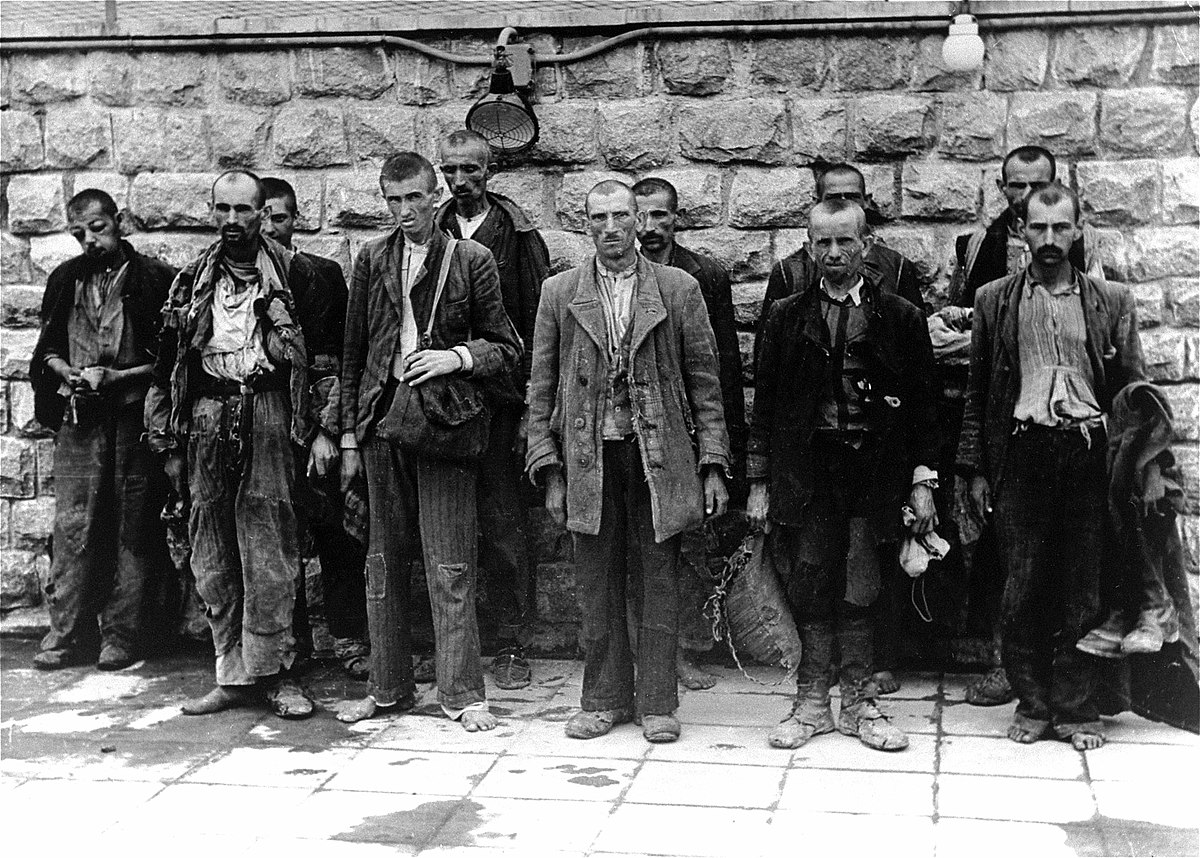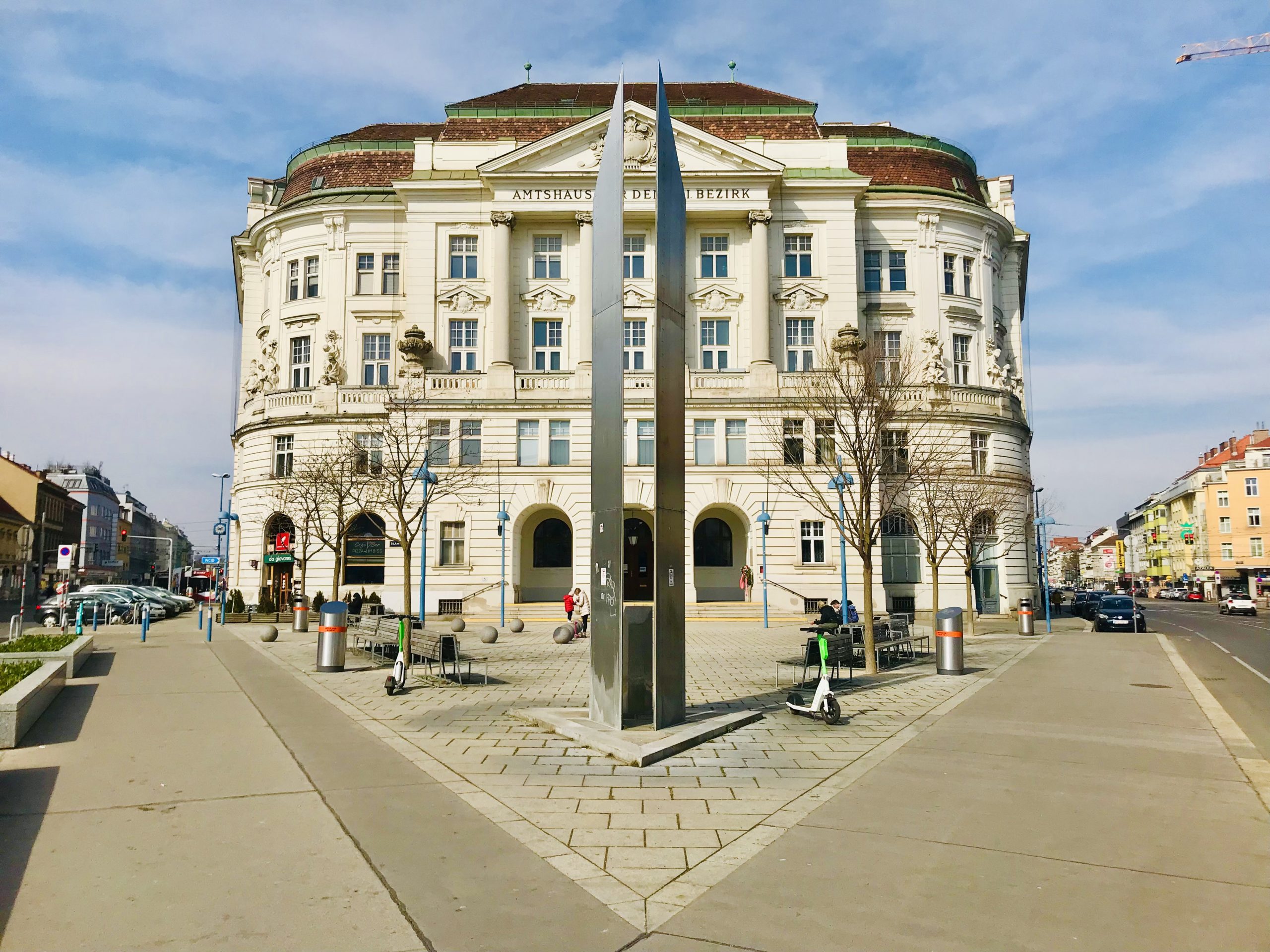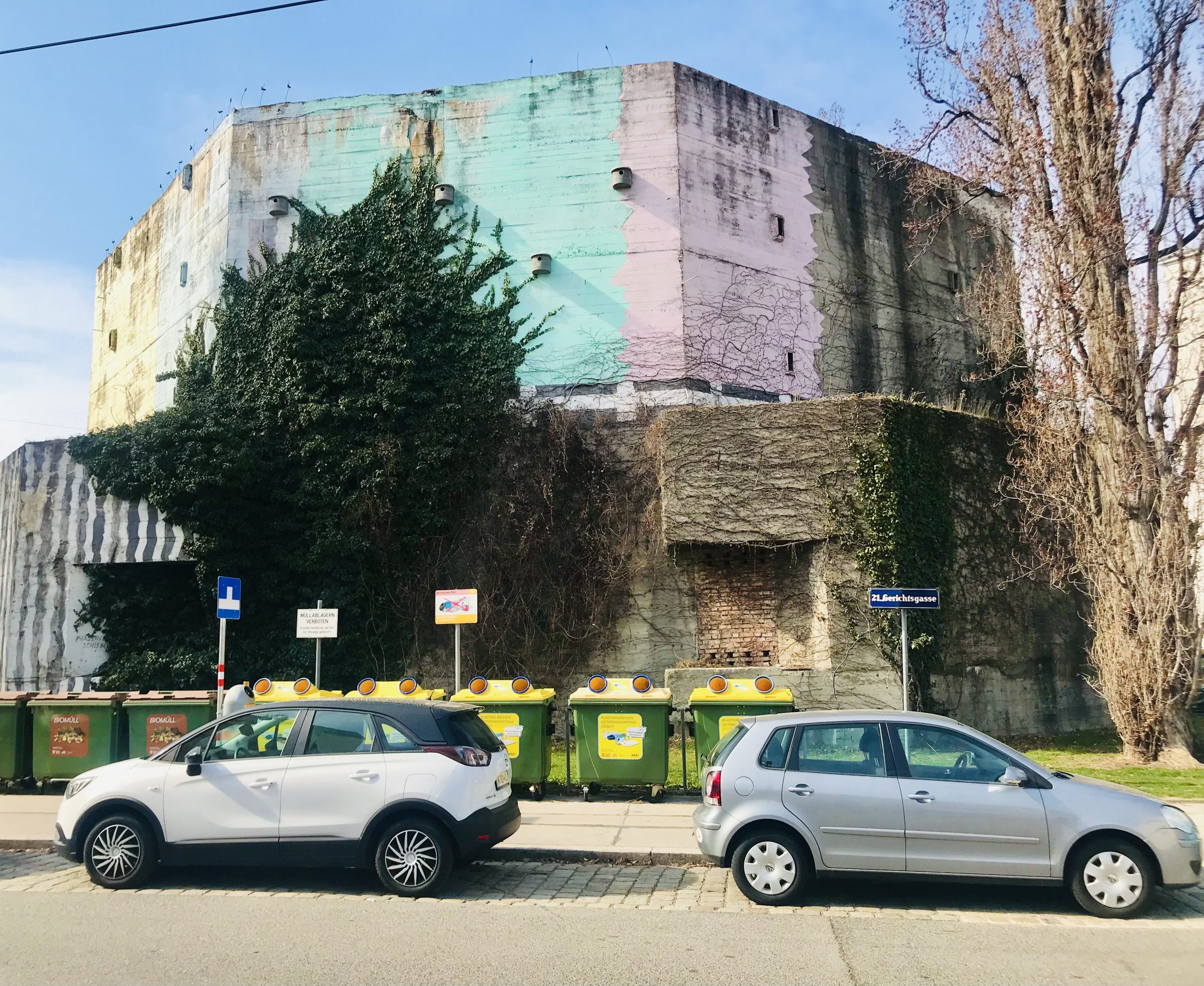ROTHENBURG OB DER TAUBER IS A FAIRYTALE TOWN OF GINGERBREAD BUILDINGS SURROUNDED BY AN IMPRESSIVE MEDIEVAL WALL
Map Rothenburg ob der Tauber, Germany
Table of Contents
Rothenburg ob der Tauber is a picturesque fairytale town along the Romantic Road in Bavaria, Germany. Endless alleys and cobblestoned streets, gingerbread houses, medieval churches and a gorgeous medieval wall surrounds the town. Today, there are so many things to see and do in Rothenburg ob der Tauber. But it wasn’t always that way. Let’s start with a brief history of the town.
A BRIEF HISTORY
Established in 980, Rothenburg ob der Tauber has had its share of ups and downs throughout history. During the early part of the 16th century, the town was heavily involved in the Peasants’ War and there were gulp… mass executions in the market squares. Yes, these are the very squares you will walk through in this scenic town. Then the Thirty Years’ War in 1631 gave birth to the legend of the Meistertrunk or master drinker. According to legend, the mayor of Rothenburg ob der Tauber guzzled a massive tankard of local wine as part of a bet to save his Protestant town from the invading Catholic army. (Although it makes for a good story, the town was actually forced to pay a massive bribe to the opposing forces after pleas from the children of the town.)
SEWAGE
Like many medieval cities lacking sewage systems, human excrement ended up in the streets. Yuck! Inhabitants were supposed to clean the mess in front of their home twice a week. Needless to say, this rule wasn’t enforced. Double yuck! The town smelled so ripe in the Summer months that the rich packed their bags and fled to the countryside.
PLAGUE
Rothenburg ob der Tauber was also besieged with the plague twice in the mid-1600s. Also known as the Black Death, the plague killed one in three people. To try to cure the plague the town’s shepherds danced around the city’s drinking wells, which uhh… naturally didn’t work. After blaming the Jewish population for poisoning the wells, the townspeople expelled all the Jews from the city. Good times.
DESTRUCTION
If the plague wasn’t bad enough, Rothenburg ob der Tauber was later captured by Napoleon who sacked the city. In 1938, the Nazis expelled all of its Jewish inhabitants. During World War II, roughly 45% of the town was destroyed in Allied bombing raids. The devastation included 306 houses, six public buildings, nine of the town’s ancient towers and more than 2,000 feet of the historic wall. In fact, Rothenburg ob der Tauber emerged from World War II mostly as a large pile of rubble. U.S. Assistant Secretary of War, General John McCloy saved the historic town center from further destruction. Having heard his mother recall her fond memories of the city, McCloy directed General Jacob Devers to negotiate with the Germans rather than continue to bomb. To walk the streets today, one would never consider this incredibly checkered past.
HOW TO SPEND ONE DAY IN ROTHENBURG OB DER TAUBER
We have chosen a handful of things to do in Rothenburg Ob Der Tauber that are not your standard tourist attractions. These are all cultural activities and will help you get the best feel for the town.
EXPLORE THE TOWN
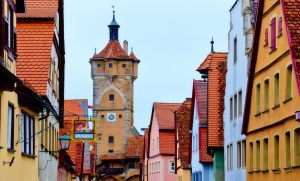 Wikimedia Commons
Wikimedia Commons
The wonder of Rothenburg ob der Tauber frankly, is just being there. One can wander the cobblestone streets for hours — getting lost is magical. It’s that type of place. Forget the tourist attractions in the town,12 the best part of this walled town is just taking your time experiencing it. If you really want to use your time wisely, then walk the town — all of it. Explore the alleys, the town squares, the moat, the bridges, and the gates. Get lost. You will be amazed at the architecture — the detailed masonry, timbered homes, and ancient wooden doors. Some doors have their original locks. This is what exploring is all about. Best of all, it’s FREE.
There are numerous attractions throughout the world that are built specifically to look and feel like Rothenburg ob der Tauber (Disney’s Epcot comes to mind). Take advantage of the real thing and explore every nook and cranny of this quintessential German medieval walled town. To many, Rothenburg ob der Tauber is one of the star attractions on the Romantikstrasse or Romantic Road — a country route through Bavaria laden with castles and quaint towns.
THE MEDIEVAL WALL
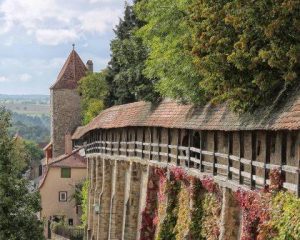 Rothenburg Turismus
Rothenburg Turismus
Exploring the medieval wall and walking the perimeter around the entire town is a real adventure. As you walk the wall, look for stones engraved with names of people from all over the world. These are people who “bought” a portion of the wall, as a way to raise money to help rebuild the town after World War II. Today, Rothenburg ob der Tauber is one of three towns in Germany with completely intact medieval city walls — the other two towns are Nördlingen and Dinkelsbühl. That’s truly impressive. If you would like to learn more about the history of the Medieval Wall, then definitely check out The Medieval Wall Tower Trail.
THE CHRISTMAS MARKET
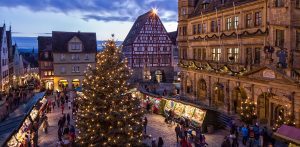 Rothenburg Turismus
Rothenburg Turismus
Who doesn’t love a Christmas market? Well, you will find one of the best right here in the Town Square. As if there weren’t enough things to do in Rothenburg ob der Tauber, during the month of December, the Christmas market is a wonderful experience and the town comes alive in a different way. Most European towns have their own unique own Christmas markets. Each market serves gluhwein (mulled wine) in mugs identifiable with the sponsoring city/town. Since they are unique, the mugs make great gifts or souvenirs. You pay a reimbursable deposit (usually Euro 4.00). There are local craftsmen selling their creations. We bought a really unique hand made bird feeder for my father-in-law.
If you appreciate fine Christmas tree decorations, then you must browse the Käthe Wohlfahrt Christmas Shop — a retailer of gorgeous handblown ornaments and traditional decorations. Other items available include music boxes, nutcrackers, incense holders, wooden Christmas tree ornament and Nativity scenes. This shop is open year round, so every day is Christmas.
MOVIE LOCATIONS
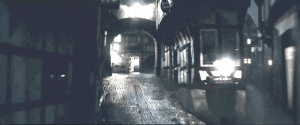 Harry Potter and the Deathly Hollows Part 1
Harry Potter and the Deathly Hollows Part 1
Rothenburg ob der Tauber has appeared in several well known films. If you are a movie buff, then explore the town to find these film locations.
It was the inspiration for the village in the 1940 Walt Disney classic Pinocchio. Do you remember the 1968 film Chitty Chitty Bang Bang with Dick Van Dyke? Then you may recognize the town as the village of Vulgaria.
Movie fans often mistake Rothenburg ob der Tauber as the town at the end of the 1971 film Willy Wonka & the Chocolate Factory with Gene Wilder. That town was actually Nördlingen, the Bavarian sister city.
The town was also used as a backdrop in some scenes from The Wonderful World of the Brothers Grimm.
Lastly, if you play video games then you may recognize the town as village of Lebensbaum in the game Harry Potter and the Deathly Hallows – Part 1 (2010) and Part 2 (2011). Today, a plaque on the Town Hall commemorates the filming.
SCHNEEBALLEN
 Michael Bußmann
Michael Bußmann
 Hans Braxmeier
Hans Braxmeier
Rothenburg ob der Tauber is known for its Schneeballen or snowballs — these are essentially a baseball-sized doughnut covered in chocolate, powdered sugar, cinnamon, and other goodness. We observed about 30-40 different varieties in the various cafe windows. I tried one covered with chocolate frosting and it hit the spot on a cold afternoon. Admittedly, they are best served fresh and with a coffee or hot chocolate.
OUR EXPERIENCE
After spending several days in the modern city of Frankfurt with its skyscrapers, arriving in Rothenburg ob der Tauber was an absolute time warp. We were eager to get out of the car and do some honest to goodness exploring. There are so many things to do in Rothenburg ob der Tauber.
The first thing that struck us was the incredibly awesome medieval wall surrounding the city. The wall is extensive and made for a neat journey on foot of almost the entire circumference of the city. After quickly entering the city gate, we “got lost” and roamed the cobblestone streets until stumbling upon the Christmas market. With mugs of warm gluhwein or mulled wine in hand, we spent several hours investigating the market which was one of the best we experienced in Europe. We were impressed by the local artisans and the level of hand made goods. In fact, we purchased a bird feeder for my father-in-law.
Although there were plenty of tourists, there were far less than we anticipated for December. Rothenburg ob der Tauber is the kind of place where photo opportunities abound and where you can easily miss something if you are in a rush. After walking down a street in one direction, we intentionally returned a different way. In this way, we saw things we had previously missed or overlooked.
After a day of fresh air and exploration in this marvelous town, we then drove northeast along the Romantic Road toward the medieval towns of Bamberg and Regensburg. As hotels were scarce and expensive in Bamberg, we opted to stay at an incredibly clean, contemporary, and gorgeous lodging called Chalet Weinberg located in the nearby village of Schlesslitz. This accommodation, with separate spacious self-contained apartments, also offered a delicious breakfast (which was included). We cannot recommend Chalet Weinberg enough — one of the best lodgings we have ever used on the road.
PRO TIPS IN ROTHENBURG OB DER TAUBER
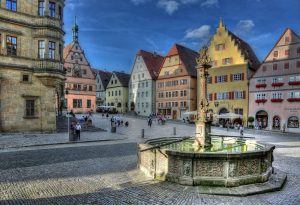 wikimedia commons
wikimedia commons
PRO TIP 1. Rothenburg ob der Tauber is best explored on foot. Don’t worry about having a map — actually, toss your map in the trash! You don’t need it. Better yet, get lost intentionally and discover what awaits around the next corner. For the best experience, tour early (before 0900) or stay late (after 1700). Get up early and grab a coffee then walk the wall for the best views of the town. Take full advantage of the time before/after the tour buses depart.
PRO TIP 2. If you are worried about parking, there are several parking lots right outside of the town’s wall. We parked our vehicle in a lot connected to Hornburgweg, a small street near the easternmost entrance to the city. Conversely, on a less-traveled day, you can find parking inside the walled town.
PRO TIP 3. We suggest exploring the entire town first and then walking the entire medieval wall. Although Rothenburg ob der Tauber is popular with tourists, it remains a must-see destination — get out there and explore.
PRO TIP 4. This is an unbelievably picturesque town, so remember to bring your camera.
PRO TIP 5. There is another town in Germany called Rothenburg. We have heard of people going there by mistake, thinking it was Rothenburg ob der Tauber, the town featured in this post.
NEAR THIS PLACE
TRAVEL GUIDE | BAMBERG. A UNESCO World Heritage Site, Bamberg is a medieval jewel with an impressive Altes Rathaus (Old Town Hall), and a network of bridges and Old Town.
TRAVEL GUIDE | REGENSBURG. A UNESCO World Heritage Site, Regensburg has the largest preserved medieval old town north of the Alps. Regensburg also has several fine Roman exhibits.
TRAVEL GUIDE | LIMBURG AN DER LAHN. The impeccable medieval town of Limburg an der Lahn features the oldest free-standing house in Germany and the House of Deadly Sins.
TRAVEL GUIDE | NAZI PARTY RALLY GROUNDS. The Nazi Party Rally Grounds in Nuremberg, a deserted Zeppelin airfield, the unfinished Congress Hall, and other structures that once hosted one of history’s most evil man and his devoted followers.
TRAVEL GUIDE | NUREMBERG PALACE OF JUSTICE. Evil was on trial in courtroom 600 of the Nuremberg Palace of Justice.
TRAVEL GUIDE | SCHWÄBISCH HALL. A medieval time-capsule of lanes, soaring massive half-timbered houses, and covered bridges that are straight out of a Brothers Grimm fairy-tale.
BEST PLACES TO STAY
BOUTIQUE CHALET WEINBERG. Clean, contemporary, and gorgeous. Spacious self-contained apartments with a delicious breakfast. We cannot recommend enough — one of the best lodgings we have ever used on the road. ADDRESS: Oberer Weinberg 22, Schesslitz, Schesslitz, Germany, 96110
HOTEL HERRNSCHLOESSCHEN. Located in one of Rothenburg’s oldest buildings. French country-style suite rooms with large beds, FREE Wifi, sauna, rental bicycles and private parking. ADDRESS: Herrngasse 20, 91541 Rothenburg ob der Tauber, Germany.
MITTERMEIERS ALTER EGO. Chic, modern boutique hotel centrally located in Rothenburg ab der Tauber. Rooms are air-conditioned with honesty bar, FREE high-speed Wifi, 55 inch HD flatscreens, and soundproof windows. E-charging stations and free private parking are available. ADDRESS: Vorm Würzburger Tor 15, 91541 Rothenburg ob der Tauber, Germany.
VILLA MITTERMEIER. Set within a traditional villa, this charming hotel is located directly opposite the Würzburger Tor gate, or Galgentor. The Mittermeier’s award-winning chef will spoil you with gourmet cuisine. Look forward to FREE Wi-Fi in all areas, free parking spaces, and competent service in a unique, historic ambiance. ADDRESS: Vorm Würzburger Tor 7, 91541 Rothenburg ob der Tauber, Germany.
RESOURCES
Tourist Information Center. For maps and additional things to do in Rothenburg ob der Tauber, check out the Tourist Information Center located at Marktplatz 2 in the main town square.
The Medieval Wall Tower Trail. To learn more about the Town’s incredible Medieval Wall, check out this great website. It has videos that explain the significance of the wall, the gates and fortifications.
Favorite Places to Visit. To discover the town’s most beautiful spots and picturesque locations, as well as history about each building, check out this website.
TRAVEL BLOGGING
Travel Bloggers Guide. Interested in Travel Blogging and Travel Blogging News? Check this out!![]()



